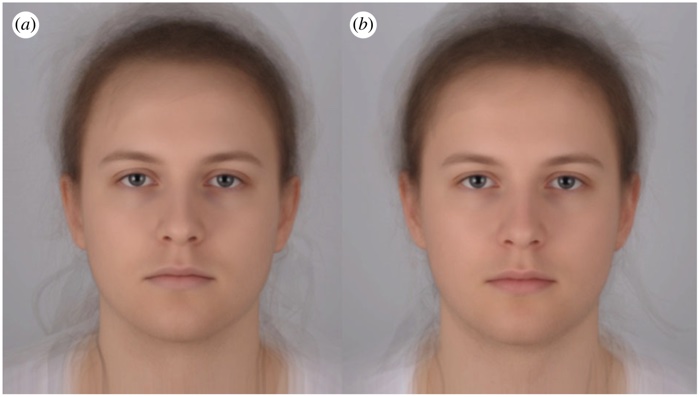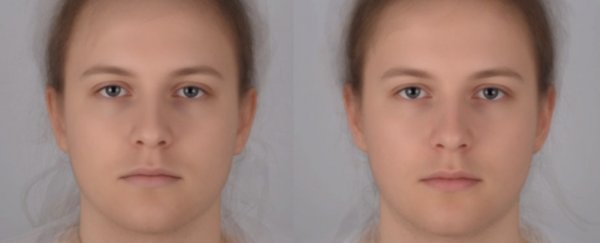Humans may possess an inherent ability to detect sick people from subtle visual cues. This skill could act as a behavioural defence against disease by limiting the risk of contamination, according to new research.
The findings suggest ordinary people may have a kind of innate sickness radar, acting like a proverbial sixth sense to alert us to the presence of the unwell – and it's so sensitive, we can even pick up on faint hints in photos of people's faces.
"An ability to detect sick people would allow people to avoid being close to sick people, and hence minimise the risk of becoming sick if the person is a carrier of contagious disease," clinical neuroscientist John Axelsson from Sweden's Stockholm University told AFP.
While there's been a lot of research on how disease avoidance affects human behaviour, we still know very little about how people actually detect sickness in others, especially by visual cues.
 Composite, overlaid images of the 16 individuals, sick and healthy (Audrey Henderson/St Andrews University)
Composite, overlaid images of the 16 individuals, sick and healthy (Audrey Henderson/St Andrews University)
Previous studies have shown that overt displays of disease symptoms prompt anxiety and disgust in human observers – and can even facilitate an immune response – but what about non-overt displays?
In other words, how finely tuned is our sickness radar?
According to Axelsson and fellow researchers, it's something that's definitely there, and is sensitive enough to detect subtle cues in photographs of sick people – but only some of the time.
To test for the trait, the team recruited 16 healthy participants aged between 19 and 34, and took photographs of them in two different sets of circumstances.
In one of the shoots, the participants had their photo taken two hours after they'd been injected with a harmless placebo, which shouldn't have altered their appearance in any way.
For the other photo, the injection they received two hours beforehand was not quite so harmless, containing a sterile lipopolysaccharide dose of the endotoxin Escherichia coli – which experimentally induces sickness, by causing a transient burst of inflammatory response that mimics the appearance of being unwell.
The idea was to shoot photos of the participants looking healthy, then capture the same people looking sick – and then see if observers of the photographs could tell the difference. They could, but not always.
A group of 62 other people looked at the photos and gave ratings on whether the subjects looked sick or healthy.
Out of 2,945 ratings for the 32 different facial photos, the observers rated 41 percent of the images as sick (not 50 percent, as it should have been), but of these 1,215 sick ratings, they got it right 775 times and wrong 440 times.
In addition, the team says the observers correctly discriminated 13 out of the 16 individuals (81 percent) as being sick better than chance, so there's clearly something going on here, although not everybody is overly impressed with the strike rate's high ratio of false alarms.
"They are only semi-accurate," psychologist Mark Schaller from the University of British Columbia, who wasn't involved with the study, told Stat.
"It's a useful reminder of the fact that when we humans use superficial characteristics as sickness cues … those superficial features often lead us astray, with the consequence that we may often respond to healthy people as though they are sick."
In another experiment, another group of observers identified the visual cues that made the subjects appear sick, including: paler lips and skin, a swollen face, droopy corners of the mouth, hanging eyelids, redder eyes, glossy and patchy skin, and the appearance of tiredness.
To be honest, that's pretty much me before coffee most mornings, but the team says these kinds of visual cues could also help us potentially identify the onset of contagious illnesses – especially since the symptoms here showed up in just two hours.
"This supports the notion that humans have the ability to detect signs of illness in an early phase after exposure to infectious stimuli," the researchers explain in their paper.
"It would arguably be particularly beneficial to identify sick individuals at an early stage of sickness when risk for contagion is high."
The findings are reported in Proceedings of the Royal Society B.
